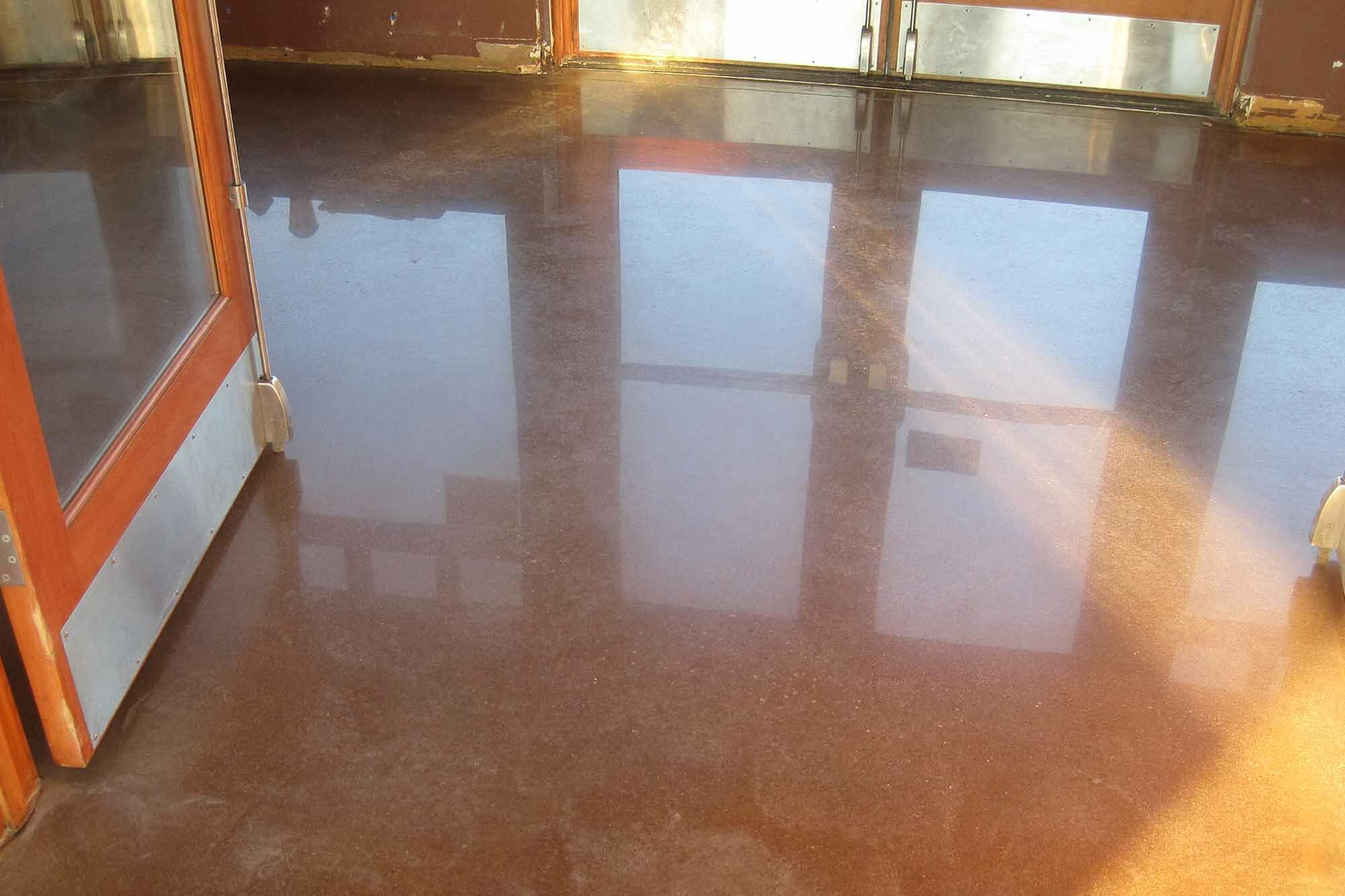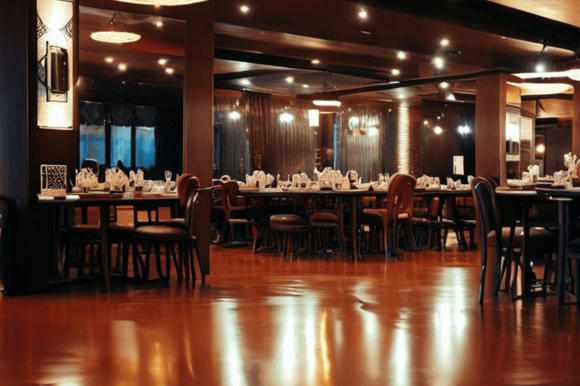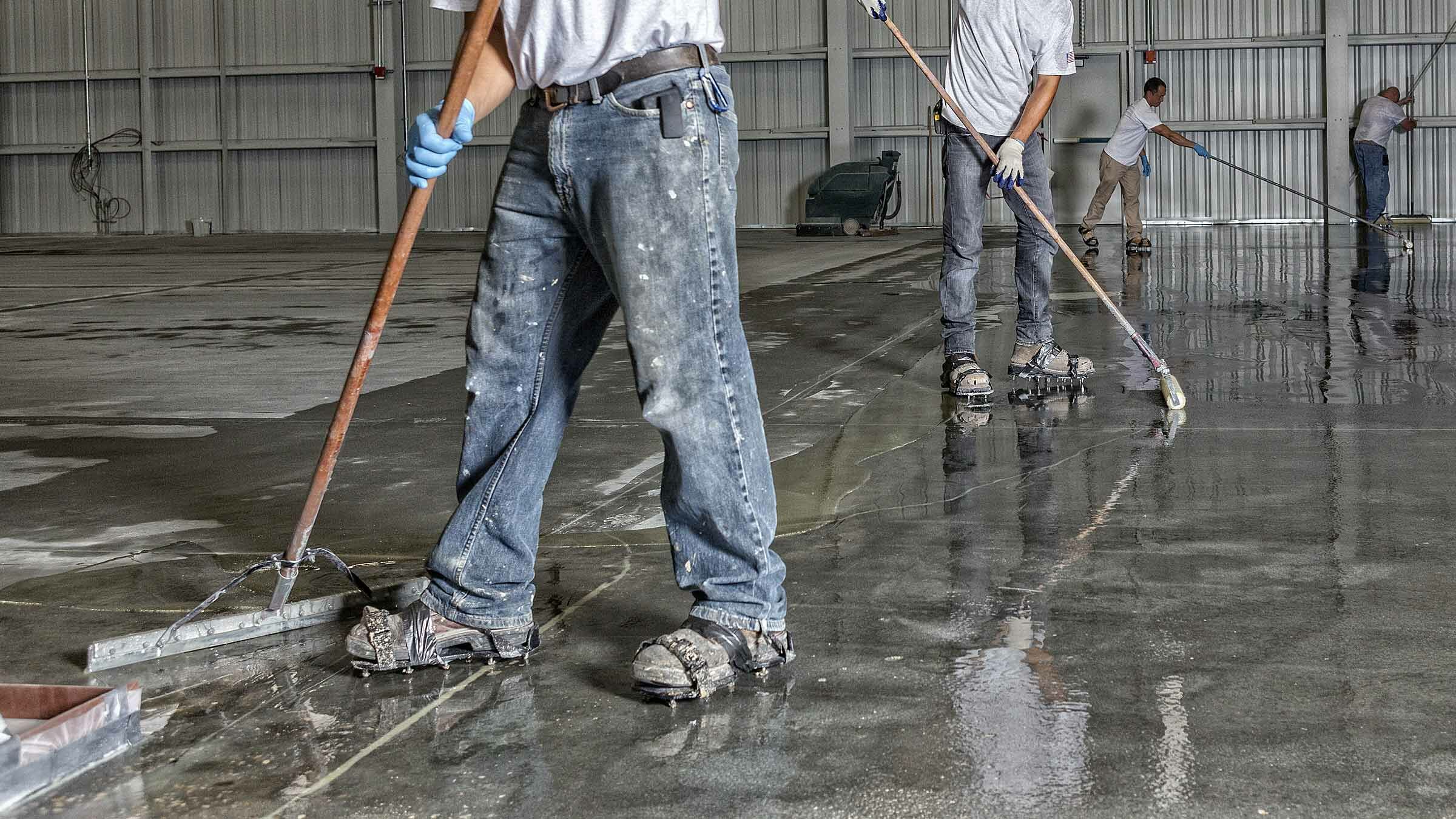Stained or Dyed? What's the difference?
Decorative Concrete Flooring is Popular!
Decorative concrete is the latest trend in concrete flooring solutions. On its own, concrete is dull. The introduction of colored concrete has businesses excited about their floors. From adding a splash of color to patterns and company logos, concrete dyes and stains transform concrete into a work of art. With the growing popularity, we want you to know the difference between concrete dyes and stains.
Dyes
Concrete dyes offer a vibrant, extensive color palette. Colors are much more intense than with stain. Dyes are straightforward to use and have a fast application process. Concrete dyes do not react to concrete commixtures. They color concrete by penetrating the porous surface. The small particles allow for more saturation, leaving behind a more vivid color. Dyes are available in water- and solvent-based formulas, each determining a different look. Water-based dyes generate a marble effect, while solvent-based dyes cultivate a monotone color. Combining the two solvents yields specialized color effects. Dyes are not UV-stable, therefore are not suitable for outdoor use.
The application of dyes consists of dissolving the dye powder in acetone and using a sprayer to disperse the particles. Rubber gloves, goggles, and respirators prevent injury when applying concrete dyes. Using special plastic sprayers when applying an acid-based dye to prevents chemical reactions. Dyes dry quickly making the application process fast. However, it also leaves little room for error. There is a nominal clean up required after application as dyes leave behind little residue. Dyes are hard to remove when applied correctly but are not as permanent as concrete stains.
Stains
Stains react with calcium hydroxide found in concrete, changing the color. It takes time for this chemical reaction to occur, up to five hours at times. Colors change during this process and are never the same as concrete compounds are different. Concrete stains have limited colors, mainly earth-tones like blue, green, red, and brown. Additional coats of stain enhance the color and create different effects. However, the first application must be dry before the next is applied, making it a slow process.
More surface preparation is required when applying concrete stains compared to dyes. Surfaces must be free of paint, sealers, and coatings. They must be cleaned and prepared with an etcher and degreaser. Wearing equipment during the application of stains, similar to those used with dyes, protects clothing and skin from damage. The cleanup after the application is extensive compared to that of concrete dyes. Residue must be rinsed off with a combination of water and ammonia or baking soda followed by a pure water rinse. Both acid- and water-based stains are UV-stable, meaning they resist fading and wear from sunlight. Therefore, concrete stains work well indoors and outdoors.
Contact Creative Maintenance Solutions to get started on your stained or dyed concrete floor.







